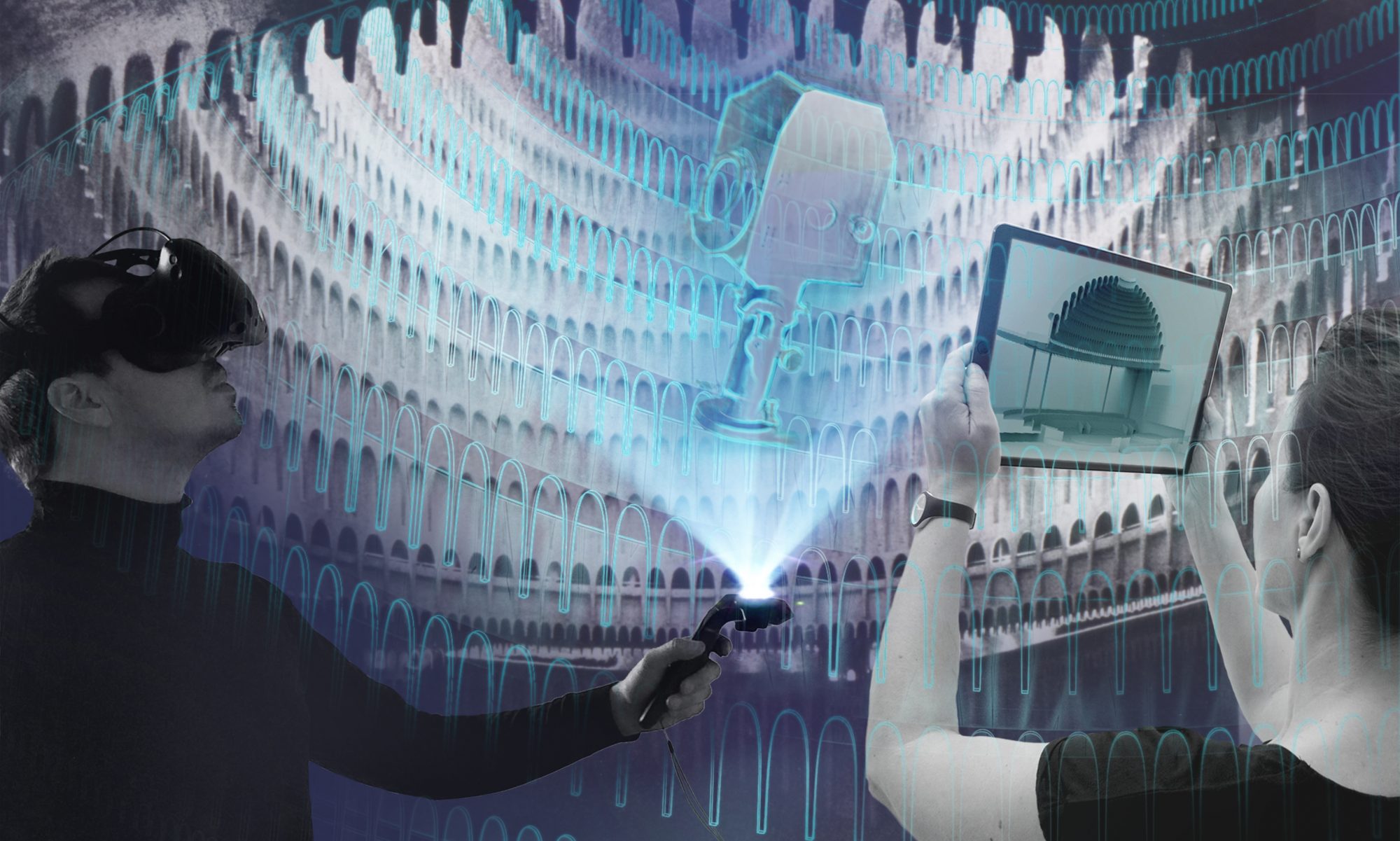The project “Augmented Reality in Event Technology” aims at facilitating recurring work processes such as the construction and dismantling of stage sets or the maintenance and administration of theatre technology using AR applications.
One aspect of this project is a tool that provides setup tutorials for individual stage technology elements using AR and VR, both web-based and via glasses.
The first step for our digital.DTHG team was to comprehend the respective work steps in the analogue system in order to be able to transfer them to the digital system later on. For this reason, we held a practical workshop on 20 June 2020 in the Deutsches Theater, in order to carry out the work steps ourselves using the example of the TRUMPF 95 curtain rail from Gerriets. Several dozen kilometers of this type of rail are sold each year. Under the guidance of Andreas Gause (Director Marketing & Key Account Management) we set up and dismantled a rail several times and created an overview of all the operating steps required for such a tutorial. Especially with a curtain rail, the order in which the elements have to be assembled is crucial.

In addition, it was possible to see in the analogue version which individual module types make up the “curtain rail” module set. This understanding provides the basis for adapting the tutorial to different configurations of the respective rail. Thus, the tutorial can later be transferred – in the sense of a “sample solution” – to other theatre technology products and elements. This is because the planned tool is intended to save time, which is precious during rebuilding work in the theatre. It should also facilitate communication between manufacturers and theatres, for example by enabling the manufacturer to deliver the correspondingly compiled tutorial when ordering a specially configured rail.
Since augmenting analog objects with digital content requires an understanding of analog matter, this practical workshop was an essential step in the project process. Many thanks at this point to Andreas Gause for his patient advice and Olaf Grambow and the staff of the Deutsches Theater for their hospitality and practical insight.


